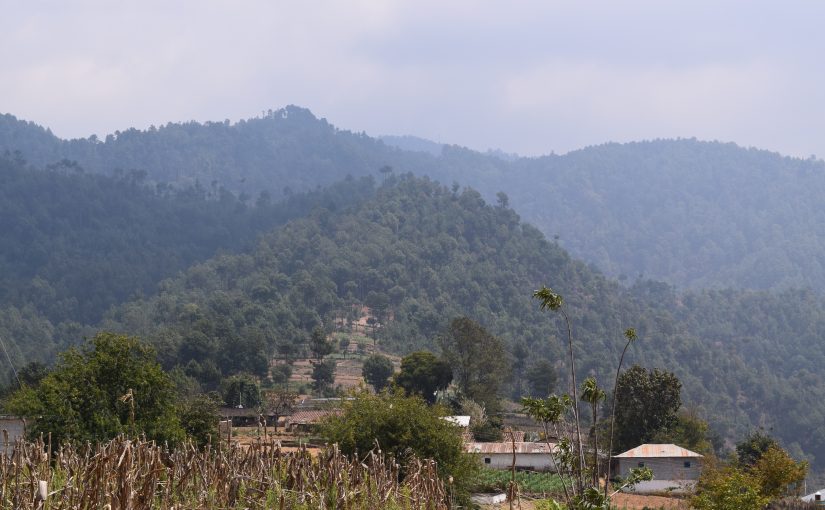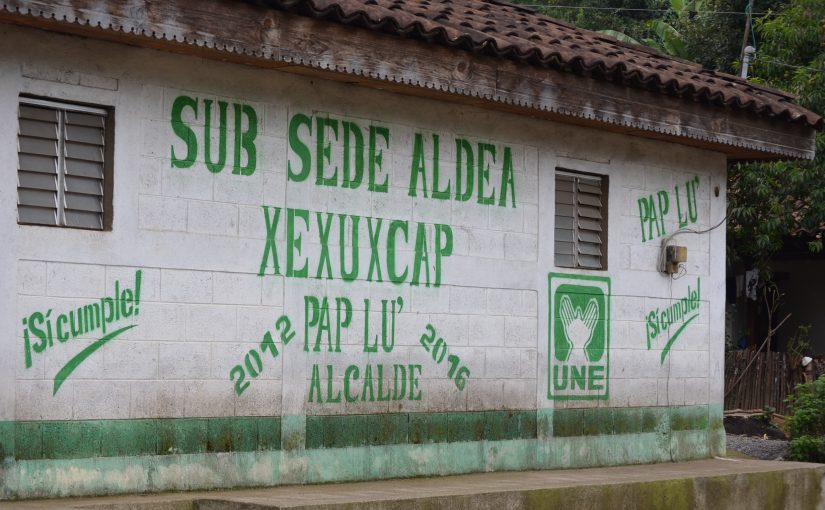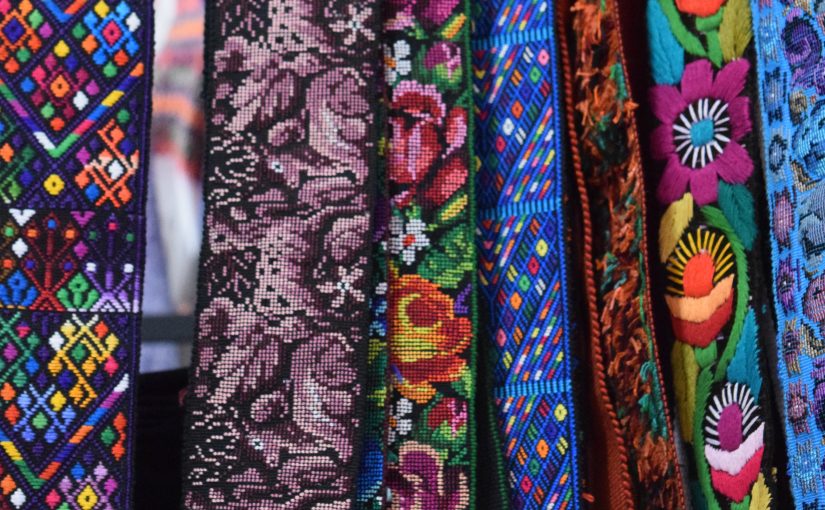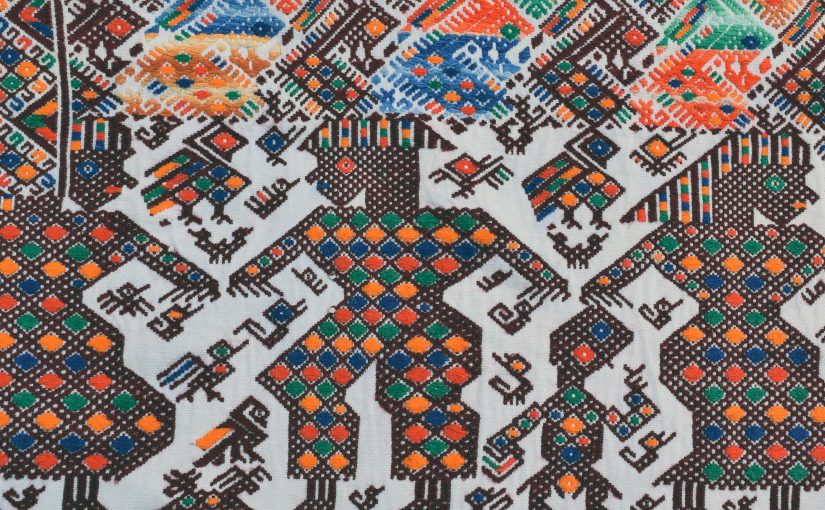Category: grammatical structures
Tïjonïk 15 Kinusik’ij le nunan (My mother calls me)
Tïjonïk 12 Na kinwar taj! (I am not sleeping)
Negation
Tïjonïk 10 Kinwar pa le nuch’at. Kinwarik. (I sleep on my bed. I sleep)
Intransitive verbs in K’iche’
Tïjonik 9 E k’i le aj k’ayib’ pa le k’ayb’al! (There are lots of merchants at the market!)
Plurals in K’iche’
PLURAL IN K’ICHE’
Plural marking in K’iche’ is a bit complicated compared to English and Spanish plurals. It is required only for nouns and pronouns referencing human beings. With non-human, animate referents such as animals and plants, it’s optional and generally reserved for emphasis. It’s used rarely with inanimate objects.
Nouns
Plural nouns are marked with the suffix –Vb’, where V = Vowel. If the last vowel of the noun is –i or –e, the plural suffix is –ab’:
1. In ajtij “I am a teacher” Oj ajtijab’ “We are teachers” 2.Are tijoxel “He/she is a student” A’re’ etijoxelab’ “They are students”Note that a’re “they” is the plural of are “he/she”. When appearing as predicates of third person subjects, plural nouns require an agreement proclitic e as in etijoxelab’ “students” in Ex. 2.
If the last vowel of the noun is –a, -o, -u, the plural suffix is –ib’:
3.At ixoq “You are a woman”. Ix ixoqib’ “You all are women” 4. At ajchak “You are a worker” Ix a’jchakib’ “You all are workers”.The third person plural agreement proclitic beginning in a vowel is a glottal stop inserted after the first vowel as in a’jchakib’ as in Ex. 4.
There are some exceptions to the vowel rule above. In almost of all of them, however, the meanings of the plural form are somewhat different from the singular:
5.k’ajol “Son of a man” k’ajolab’ “Young men, male youth” 6.ak’al “Child” ak’alab’ “Children” 7.ali’ “Girl, unmarried young woman” altomab’ “Girls” 8. ala “Boy, unmarried young man” alab’om “Boys” 9.achi “Man” achijab’ “Men” 10.ati’t “Grandmother, female animal” ati’tab’ “Female animals” 11.mama’ “Grandfather, male animal” mama’ib’ “Male animals”
Adjectives
Adjectives do not have plural forms except the following (the plural suffix is -aq)
12.ch’utin / ch’utiq “small” 13. nim / nimaq “big” 14.chom/ chomaq “fat” 15.pim / pimaq “thick”When the adjective is acting as sentence predicate, number agreement is required: A glottal stop is inserted after the a in –aq. Compare Ex. 16 and Ex. 17 and 18 below.
16.Le nimaqa taq ja “The big houses” 17.Nima’q le ja “The houses are big” 18. Nima’q taq le ja “The houses are big”
PLURAL PROCLITIC ‘TAQ’
Plural nouns are optionally marked with the proclitic taq. In addition to plurality taq also denotes distributive and/or diminutive qualities: it is distributive when it looks at “many” in terms of individual components, rather than as one set composed of a plurality of members; it is diminutive when it adds a sense of affection or deprecation to the expression. The latter are mirrored in Spanish, for example, by –ito/a as in mujercita and –ota mujerota (from Spa. mujer “woman”) respectively. In the proclitic taq plurality is inseparable from the distributive or diminutive qualities.
Syntactically, taq has two preferred collocations:
a) Between the article (le) and the noun: It conveys a diminutive quality in addition to plurality.
19.Kewar le taq imul “The (cute, little, lovable) rabbits are sleeping” 20.Kewar le imul “The rabbits are sleeping”The noun imul “rabbit” in Ex. 20 is not overtly marked for plurality. As we will see in future lessons, in this case number agreement on the verb marks the subject as plural.
21.Le nimaq taq ja “The big houses”In Ex. 21 diminutive qualities are unlikely unless additional contextual information brings them to the fore. The context helps disambiguate the relevant semantics of taq.
b) In existential and stative sentences: When the predicate is a plural noun phrase taq replaces the article. In this case, the semantics of taq are exclusively plural. The reader should be aware that in K’iche’ predicates precede subjects unlike Spanish or English, for example, where sentential subjects generally precede predicates.
22.Saq taq le ja. “The houses are white”In Ex. 22 the predicate saq “white” precedes the subject taq le ja “The houses”.
23.K’o taq ab’aj pa le b’e. “There are stones on the road” 24. Rax taq le kotz’i’j. “The flowers are green” 25. Ek’a’n taq le tz’i’. “The dogs are fierce”When referencing animate nouns the agreement marker e before the predicate is preferred as in Ex. 25. It is less likely to occur with plants as in Ex. 24, which are typified as less animate than animals. Number agreement may be the sole plural marker in some cases, however, where plural marking on nouns is absent as in Ex. 26.
26.Ek’a’n le tz’i. “The dogs are fierce”In Ex. 26 the proclitic e is the sole plural marker as the proclitic taq does not appear preceding the subject le tz’i’ “the dogs”.
27.U’tz le winaq. “The people are good”In Ex. 27 the glotal stop agreement proclitic following the first vowel on the predicate utz is the sole plural marker as well.
28.Enima’q le altomab’ “The girls are big”In Ex. 28 both the predicate nima’q and the subject altomab’ bear plural markers. Nima’q in particular is triply marked: First, the plural suffix –aq, and second the plural proclitic e preceding nima’q as well as the glottal stop before the q in –aq (see above). Multiple plural marking is not uncommon in K’iche’.
29.A’re wa’ le ewal. “These here are my kids (spoken by a woman)”The agreement proclitic e precedes wal “my kids”. Note the plural marking on the pronoun a’re “they”.
30. A’re wa’ le enuchikop “These here are my animals”. 31.Etijoxelab’ le a’chijab’ “The men are students”.Note the agreement proclitics (e and glottal stop) on both plural nouns in the predicate etijoxelab’ and in the subject le a’chijab’.
32.A’jtijab’ le achijab’ “The men are teachers”.In contrast to Ex. 31, the subject achijab’ does not show an agreement proclitic in Ex. 32.
33.E’laqomab’ taq le achijab’ “The men are thieves”. 34.Ek’o kajib’ uk’ajol le tat Wel “Don Manuel has four sons”In existential sentences the agreement proclitic e optionally precedes the existential k’o as in Ex. 34. The cardinal number kajib’ “four” marks the subject as plural. Possessed nouns such as as uk’ajol “his children” are not pluralized even when referencing human beings.
35.Jawi ek’o wi le awal? “Where are your sons? (Addressed to a woman)”Finally, there is an additional plural proclitic with a clearly negative, deprecatory connotation: staq, as in Ex. 36 below. Do not confuse with taq, which is distributive/diminutive (Ex. 37).
36.Kewar le staq imul “The stupid rabbits are sleeping”. 37.Kewar le taq imul “The cute/little rabbits are sleeping”
Tïjonïk 8 La k’o le anan? (Is your mom home?)
How to ask yes/no questions




